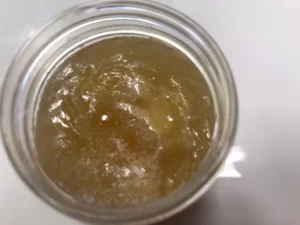What is White Oil
White oil, often misunderstood due to its name, is actually a crystal clear substance. It is known variously as liquid paraffin wax, mineral oil, or by scientific names like paraffinum perliquidum. In addition, it stands out for being colorless, odorless, and tasteless. It is a blend of saturated paraffinic and naphthenic hydrocarbons, refined meticulously to achieve purity and stability. With a viscosity range of 50-370 SUS at 100°F, white oil is notable for its near absence of nitrogen, sulfur, oxygen, and aromatic hydrocarbons.
Properties of White Oil
- Chemical Inertness: Remarkably free from reactive elements like nitrogen, sulfur, and oxygen.
- Purity: Its refining process eliminates almost all impurities.
- Thermal Stability: Can withstand varying temperatures without altering its chemical structure.
- Odorless and Tasteless: Lacks any distinct smell or taste.
- Viscosity: Maintains a consistent viscosity within a specific range.
- Colorless: Contrary to its name, white oil is crystal clear.
Production Process
White oil is produced through a sophisticated refining process. Starting with various feedstocks, ranging from conventional base stocks to Vacuum Gas Oils (VGO), it undergoes either the older acid treatment process or the more modern two-stage hydrotreating method. Both methods are dedicated to removing detrimental components like aromatics and sulfur, ensuring the oil’s purity and thermal stability.
Identifying White Oil
To correctly identify white oil, look for its characteristic features: a colorless, odorless liquid with a smooth, non-greasy texture. It should be free from impurities and not react with other substances, indicative of its high refinement level.
Applications in Different Industries
White oil finds its utility in a wide range of industries due to its unique properties like purity, stability, and inertness.
1. Cosmetics Industry
White oil is a popular ingredient in cosmetic products due to its non-toxic and non-irritating nature.
- Skincare: In moisturizers and lotions, it helps to lock in moisture without clogging pores.
- Haircare: Used in hair oils and conditioners to add shine and smoothness.
- Makeup: Found in lip balms and makeup removers for its gentle, non-drying properties.
2. Pharmaceutical Industry
Its chemically inert nature makes it safe for pharmaceutical applications.
- Laxatives: Used in mineral oil laxatives for treating constipation.
- Creams and Ointments: Incorporated in topical applications for soothing and lubricating effects.
- Medical Devices: Utilized as a lubricant in medical instruments for safe insertion.
3. Textile Industry
It enhances the processing of fabrics.
- Fiber Lubrication: Used in textile manufacturing to reduce fiber-to-fiber friction.
- Leather Treatment: Applied to leather goods for softening and preservation.
4. Agriculture
It acts as a safe and effective pesticide.
- Pest Control: Used in horticultural oils for controlling insects like aphids and mites.
- Plant Protection: Applied to foliage to prevent pests without harming the plant.
5. Plastics and Rubber Industry
It adds stability and smoothness in manufacturing processes.
- Plasticizers: Incorporated in plastics to improve flexibility and durability.
- Rubber Processing: Used as a lubricant and release agent in rubber production.
6. Chemical Industry
White oil serves as a base or carrier in many chemical applications.
- Manufacturing Processes: Used as a process oil in the production of various chemicals.
- Lubricants and Greases: Forms a base in the production of industrial lubricants and greases.
Download Properties


